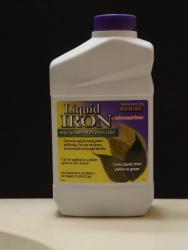Try a foliar application of a product like this "Liquid Iron" that also contains micro nutrients that can cause chlorosis (iron, copper, manganese, magnesium, zinc). If it works, then you know it is a soil problem. Likely pH, but not necessarily: soil might also be too heavy or waterlogged. If it doesn't work, than it proves nothing, since foliage at this time of year may not absorb the nutrients sufficiently.

Remember any changes you do to a soil is never permanent, and need to be maintained. Watering with municipal water (high pH) or most well water (since most are also high pH) will have an on going effect of raising pH.
You mention that
some of your blueberries are yellow. If this is true, than it is the most telling clue to your problem. If
some parts of certain plants are yellow, that a different clue. Think of ALL the things that a different about them, compared to healthy plants. (For instance, did you test the soil of healthy versus non-healthy plants?) It may not be just one variable causing the problem. The typical individual becomes fixated on one solution, and ignores the other possibilities. Don't be that person.

